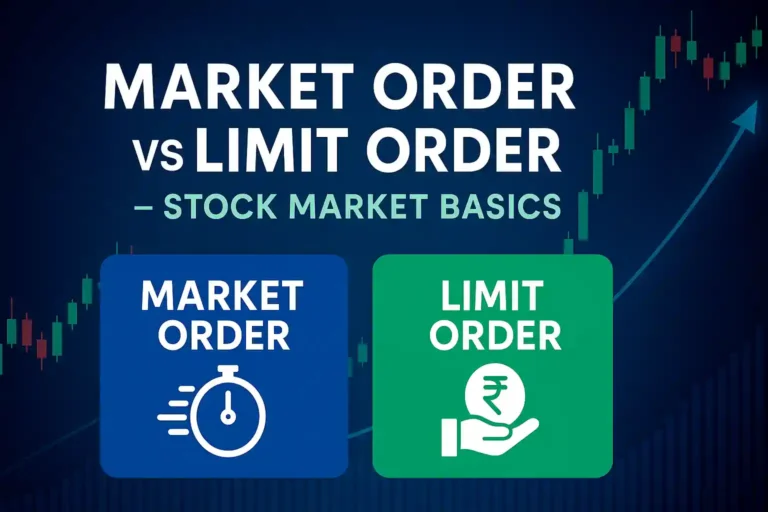When you start investing in the Stock Market, you will come across two common terms: Market Order and Limit Order. These are types of orders you place when buying or selling shares. Let’s understand both in easy way.
What is a Market Order?
A market order means you want to buy or sell the stock immediately at the current market price.
- You don’t control the price.
- The trade happens fast.
- Best for when you just want to enter or exit quickly.
Example:
Suppose you want to buy shares of TCS, and the current market price is ₹3,600 per share.
If you place a market order, your broker will buy the shares for you at the best available price. It may be ₹3,600 or slightly more or less, depending on the market.
What is a Limit Order?
A limit order means you set the price at which you want to buy or sell the stock.
- You control the price.
- The trade happens only if the market reaches your price.
- Best when you want to get a better deal.
Example:
You want to buy TCS shares, but you feel ₹3,600 is too high. You place a limit order at ₹3,550.
Now, your order will only go through if the stock price falls to ₹3,550. If it doesn’t, your order won’t be completed.
Main Differences between Market Orders and Limit Orders
| Feature | Market Order | Limit Order |
|---|---|---|
| Price Control | No | Yes |
| Speed | Fast | May take time |
| Execution | Guaranteed (if liquidity is there) | Not guaranteed |
| Best For | Quick buying/selling | Buying/selling at a specific price |
Which One Should You Use?
- Use Market Order when speed is more important than price.
- Use Limit Order when price is more important than speed.
Both have their own benefits. Beginners often use market orders, but limit orders can save money if used smartly.
Conclusion
Knowing when to use market or limit orders helps you make smarter investment decisions. Always check the market condition and decide which type of order suits your goal.

